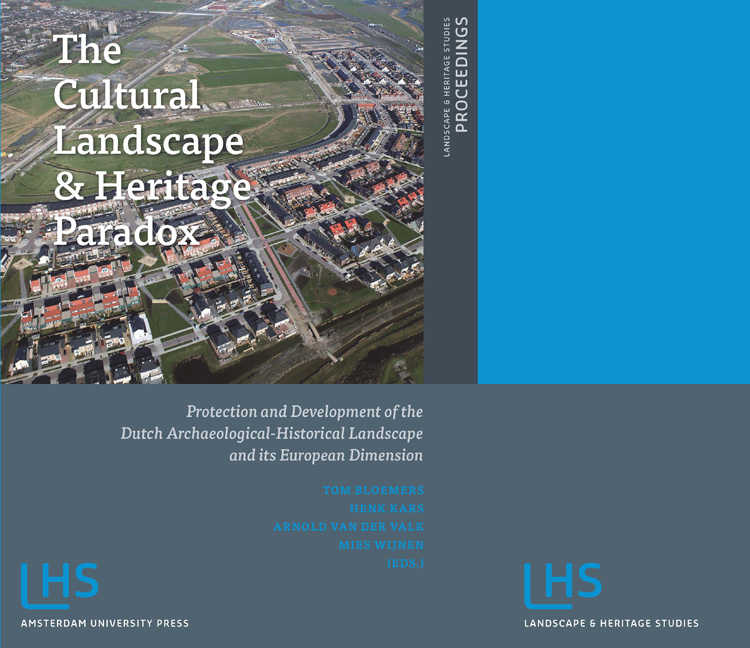 The Cultural Landscape and Heritage Paradox
The Cultural Landscape and Heritage Paradox Book contents
- Frontmatter
- Contents
- Preface
- I INTRODUCTION
- II INSIGHTS AND PROSPECTS OF ARCHAEOLOGICAL-HISTORICAL LANDSCAPE STUDIES
- III LINKING KNOWLEDGE AND ACTION
- IV IMAGINATION - FACTS AND CONSTRUCTIONS
- V SHARING KNOWLEDGE - STORIES, MAPS AND DESIGN
- VI SYNTHESIS AND CONCLUSIONS
- VII MANAGEMENT OF KNOWLEDGE
- VIII AGENDA FOR THE FUTURE
- IX SUMMARY
- X APPENDIX
- Subject Index
- Index of Places and Regions
3 - Two Sorting-Machines for the Oer-IJ
Published online by Cambridge University Press: 21 January 2021
- Frontmatter
- Contents
- Preface
- I INTRODUCTION
- II INSIGHTS AND PROSPECTS OF ARCHAEOLOGICAL-HISTORICAL LANDSCAPE STUDIES
- III LINKING KNOWLEDGE AND ACTION
- IV IMAGINATION - FACTS AND CONSTRUCTIONS
- V SHARING KNOWLEDGE - STORIES, MAPS AND DESIGN
- VI SYNTHESIS AND CONCLUSIONS
- VII MANAGEMENT OF KNOWLEDGE
- VIII AGENDA FOR THE FUTURE
- IX SUMMARY
- X APPENDIX
- Subject Index
- Index of Places and Regions
Summary
This tug of war between memory that pulls and oblivion that pushes, a useless contest, for oblivion and forgetting always win in the end. The world is so forgetful, that it even fails to notice the absence of what has been forgotten.
José Saramago, The year of the death of Ricardo ReisThe article is a transcription of two chapters of a study report on the archaeology of the Oer-IJ area. The report was aimed at enlightening the behoud door ontwikkeling (conservation through development) strategy and concluded by constituting an implementable policy agenda for the area based on this strategy.
This article focuses on two models. One is designed to distinguish between the abstract domain of policy-making, the world of language, and the (designed) results of these policies in the material world. Six levels were distinguished to research the relation between policy and outcome: policy concepts, policy aims, policy measures, design concepts, design repertoires and (executed or executable) designs. One finding is that there is so little exchange between the distinguished levels that there is no way to assess whether what is designed has anything to do with what was aimed at; a second finding is that the concepts tend to take the form of dogmatic, denial-proof statements.
The second model is a section of the first and distributes the designed results in relation to their claim to historical authenticity and their existence in the material world. This model is designed to be able to define the possible results of the behoud door ontwikkeling strategy as authentic historical representations distinguished from stories, art, falsifications and kitsch.
KEY WORDS
Conservation by development; Oer-IJ, cultural history; policy concept, aims, measures; design concept, design repertoire, design; policy and space; cupboard, matrix, forgetting
INTRODUCTION
The Belvedere Memorandum was published in 1999 (Belvedere 1999). In this document, the national government of the Netherlands assigned a guiding role to cultural history on the policy agenda for spatial development. Everyone supported this initiative, no one was against it. The national government, provinces, municipalities and water boards were unanimous in their conviction that it is better when the past is recognizable in spatial development than when it is not.
- Type
- Chapter
- Information
- The Cultural Landscape and Heritage ParadoxProtection and Development of the Dutch Archaeological-Historical Landscape and its European Dimension, pp. 239 - 262Publisher: Amsterdam University PressPrint publication year: 2010


